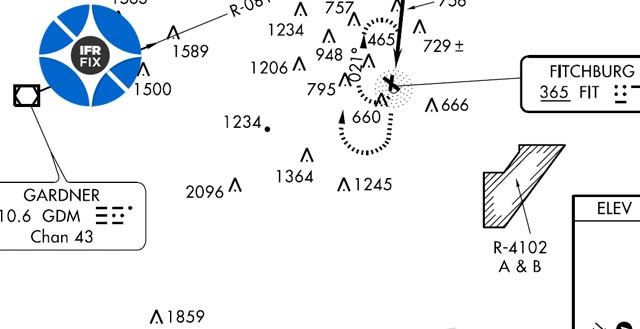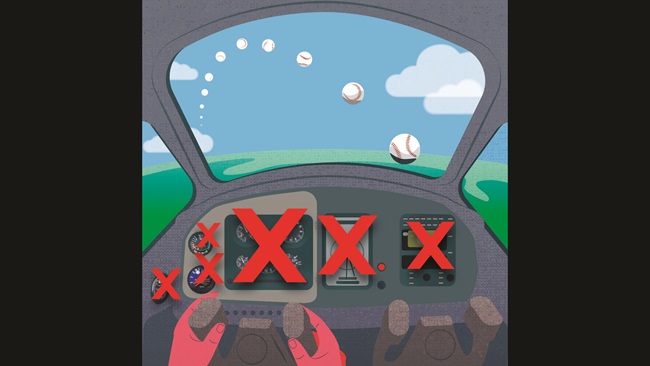
Darkness has fallen as the light twin with a 64-knot VSO prepares for an approach at northern Massachusetts’ Fitchburg Municipal Airport, which sits beneath a 1,500-foot overcast with two miles visibility.
The plan for the dusk proficiency flight was to fly a published Manchester VOR transition to an NDB-A approach for which the pilot had briefed, including ensuring that a restricted area awkwardly located along the final approach course is inactive. But delays have sunk that plan; the approach is not authorized at night.
Fortunately, Fitchburg features another option available to the non-RNAV-equipped aircraft: the NDB Rwy 20 approach.
It’s flyable at night, with caveats. Cleared for the approach—also via a transition from Manchester—the pilot turns right to intercept the MHT 246-degree radial, leaving the 237-degree radial that the flight was tracking for the previous procedure.
Descending from 4,000 feet, the pilot is careful to level off at 3,500 feet, not 3,000 feet as planned for the prior procedure.
The Fitchburg NDB is located on the airport, so the initial approach fix is set 5.1 nautical miles north at TONYA, identified as the intersection of the 201-degree bearing to the NDB and the 081-degree radial from the Gardner VOR.
Maintain 3,500 feet until inbound from the procedure turn. Then descend to 2,100 to TONYA, and then to minimums for landing, or until NDB station passage and a missed approach. (Note the nonstandard glide angle on the final leg.)
What minimums apply? This aircraft belongs to approach category A. But with several extra knots added to approach speed for gusts, the pilot will apply category B values, raising the minimum descent altitude to 1,320 feet per this note: “Straight-in minimums NA at night.”
With its displaced threshold, the runway has 3,043 feet available for landing. If the runway lights do not seem responsive to your clicks, it’s not CFII-induced systems trouble. The approach plate reveals that these runway lights activate on 123.0 MHz, not the common traffic advisory frequency 122.7.
Now they’re shining—directly below. Good thing the uncomplicated missed approach, a three-step sprint back to the NDB, followed by a parallel entry to the standard hold, helps minimizes the effect of that distraction.
Oh, and Boston Approach is calling. They see you on the missed approach, and want to know what you would like to do next.



